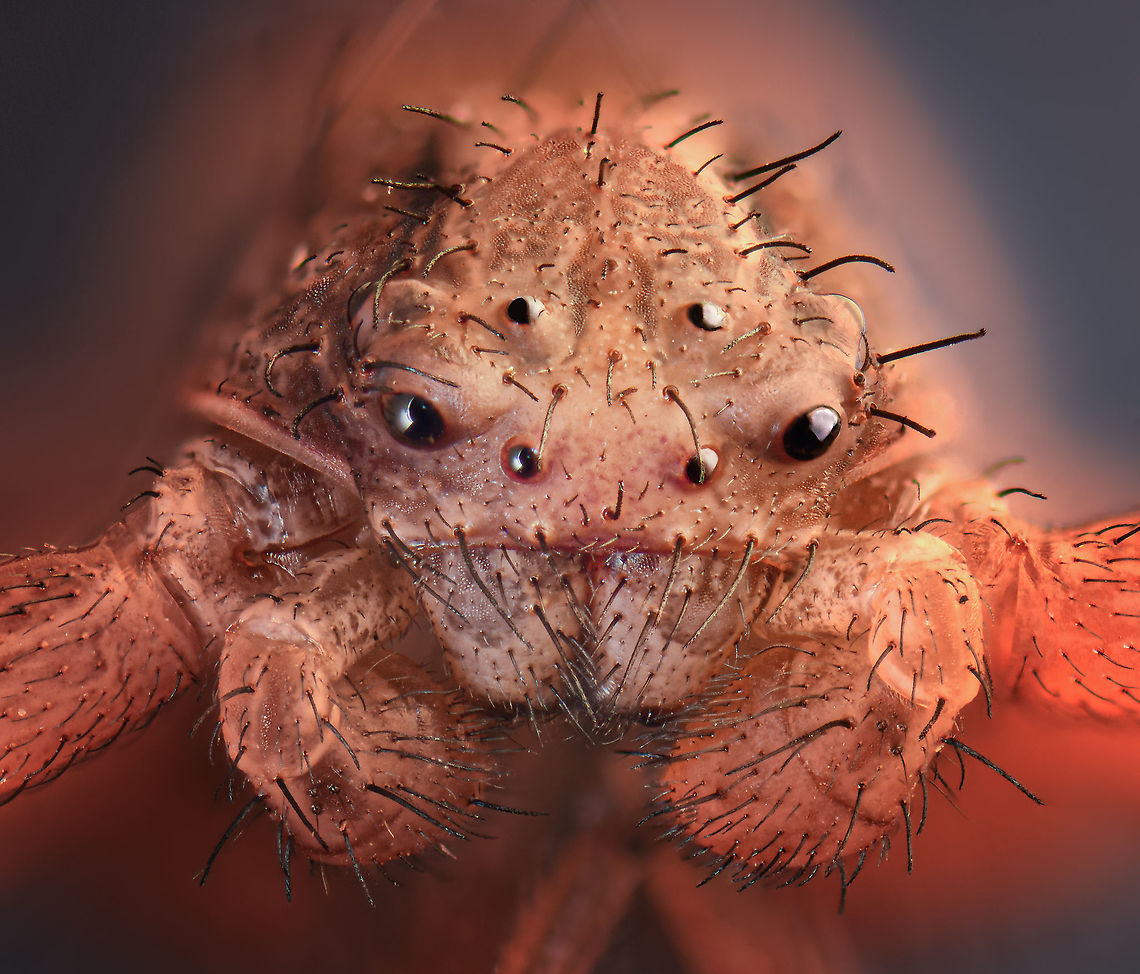 Promoted
Promoted
Ozyptila sp., extreme macro, Netherlands
Whilst playing with our cat in the backyard, I noticed some movement in the grass, a tiny crab spider. Unusually small compared to how I normally find them, and I wasn't expecting them on the ground. This one I roughly estimate at 4-6mm wide for the abdomen, so without legs.
I sacrificed this one. To repeat my earlier take on this: I prefer to use arthropods found dead (about 75% of cases), yet sacrifice on an exceptional basis, within moderation. Only if it's a species not done before, or if the subject is meaningful or promising. And I will always disclose it.
Technically, I'm pleased with the result, which doesn't happen a lot when it comes to extreme macro. The interesting "making of" note for this one is that I used a tunnel diffuser. Which is a very fancy way of saying that I enclosed the subject entirely with a paper cup, and then aimed my flash unit directy to the outside of the cup. The paper texture causes soft spread light, yet due to the shape of the cup, light also bounces inside of the cup, in all directions. Altogether, this creates a relatively soft and even light in all directions.
It's a delicate process for me to pull this off currently. Positioning the cup without touching anything else is stressful, but once done, you lose focus light. There's almost no distance between the front of the lens and the beginning of the cup, so hardly any way to get any preview light in there. Therefore, everything needs to be ready, calculated and programmed before taking this step.
Ways around this would be to have a very strong permanent light next to the cup, to at least have *some* preview light. Or, to have the cup placement procedure be more repeatable, in some permanent position where it always lands in the same spot. I'll explore that.
Back on point, ultimately the point of all of it is the subject, not the process. I find it delightfully unsettling. Should have posted it for Halloween.
As for species, I expect it is in the Ozyptila genus. This genus has relatively dull crab spiders and most are only a few mm in size.
No species identified
The species on this photo is not identified yet. When signed in, you can identify species on photos that you uploaded. If you have earned the social image editing capability, you can also identify species on photos uploaded by others.

comments (22)
I think it's one of the extra unsettling aspects of the image, the color comes quite close to human skin, of white people that is. Posted 5 years ago
For everyone that has always wondered what the face of a crab spider looks like under extreme macro magnification, your wait is over! Behold, the adorable, scruffy face of an Ozyptila sp. crab spider! These spiders are somewhat drab and are only a few millimeters in size, but their faces are unforgettable. {Spotted in the Netherlands by JungleDragon founder, Ferdy Christant} #JungleDragon #Ozyptila #Crabspider #Extrememacro
Not only did Ferdy create JungleDragon, but he is an avid nature lover, photographer, and traveler! Check more of his photos: https://www.jungledragon.com/user/2/popular
https://www.facebook.com/jungledragonwildlife Posted 5 years ago